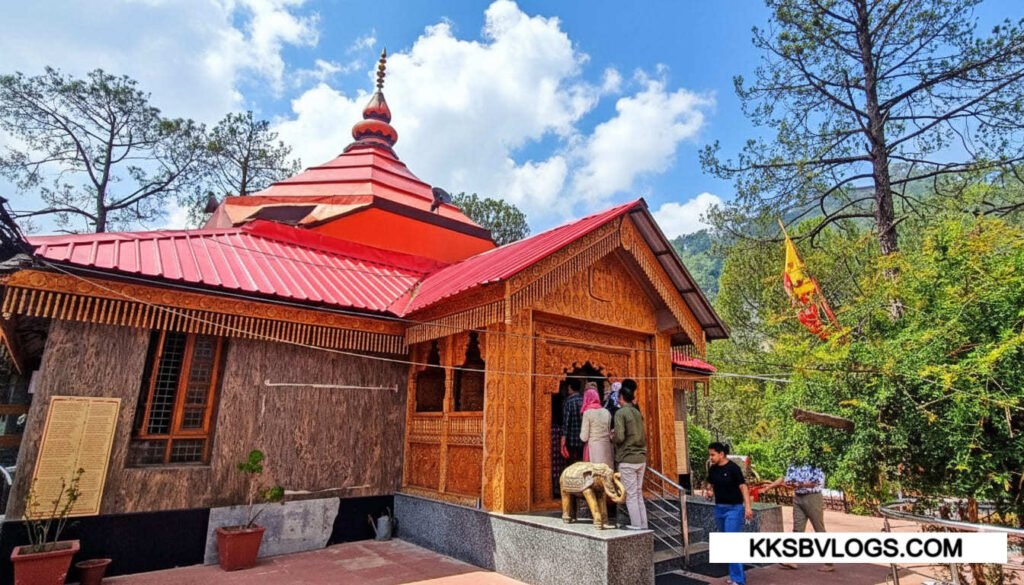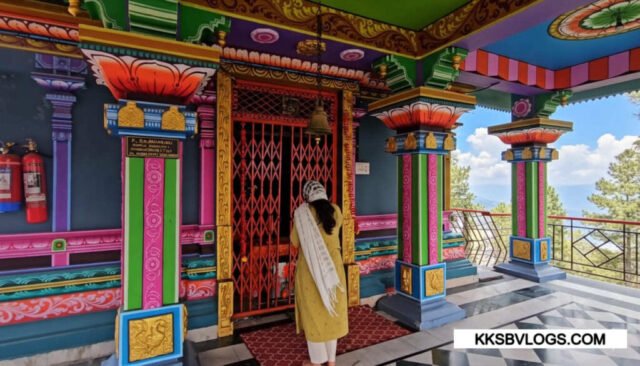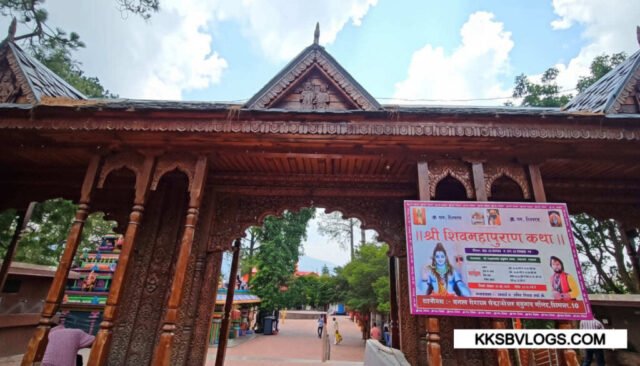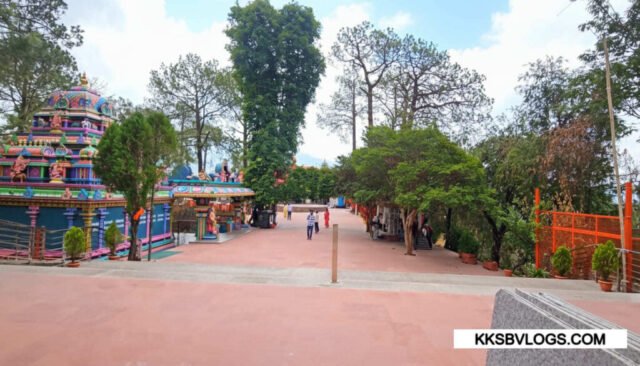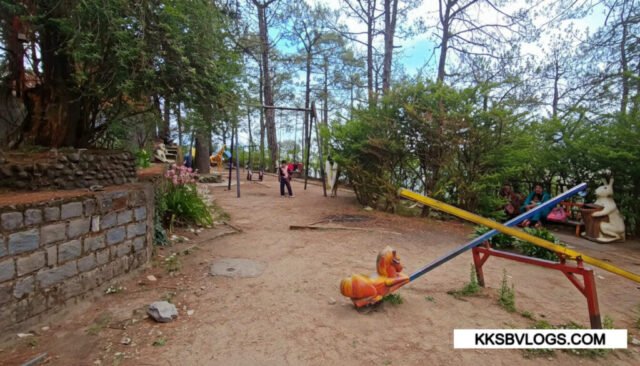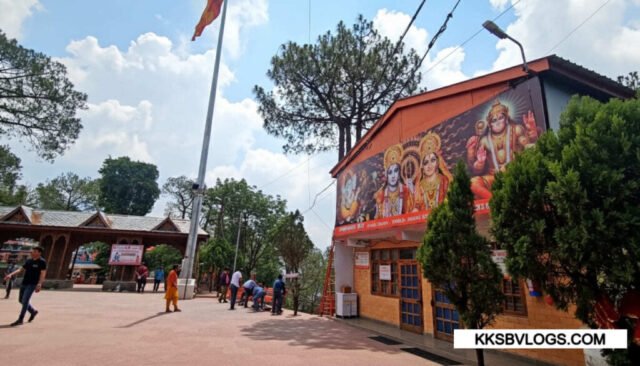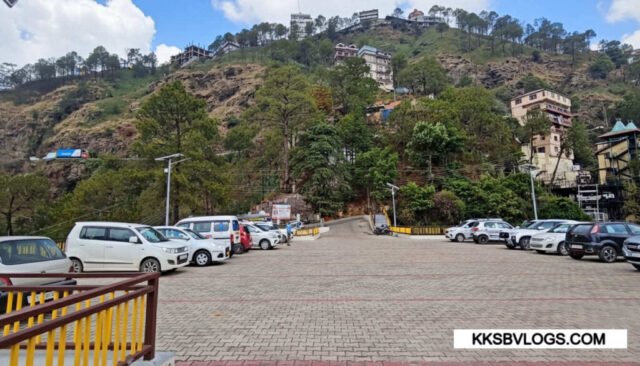1) Introduction
The hills of Shimla are not only famous for their colonial charm and tourism but also for their spiritual heritage. One such sacred spot is the Sankat Mochan Hanuman Temple, located on the outskirts of Shimla town on NH-22, nestled amidst dense deodar and pine forests.
While Jakhu Temple is known for its 108-feet Hanuman statue, Sankat Mochan is regarded as a peaceful alternative. The calm, green, and meditative environment here makes it perfect for those seeking devotion and silence away from the crowds.
The very name “Sankat Mochan” means “the remover of troubles.” Devotees believe that worshipping Hanuman Ji here reduces life’s obstacles and hardships.
✨ Special features of this temple include:
- Shrines of Lord Hanuman, Lord Rama–Sita, Lord Shiva, and Ganesha
- Sunday Bhandara (community meal) attended by hundreds of devotees
- Courtyard views offering panoramic sights of Shimla Valley
This blog covers the history, Neem Karoli Baba connection, temple architecture, spiritual significance, festivals, travel guide, and visitor tips about Sankat Mochan Temple.
2) History & Legends of Sankat Mochan Temple
2.1 Neem Karoli Baba Connection
The history of Sankat Mochan Temple begins in the 1950s. The great saint Neem Karoli Baba, who also established Hanuman temples in Lucknow and Vrindavan, meditated at this very spot in Shimla.
Baba envisioned building a Hanuman temple here. With the help of his followers and local devotees, the temple was constructed. At that time, this place was just a secluded forest filled with spiritual vibrations and natural silence.

2.2 Meaning of “Sankat Mochan”
In Hindu tradition, Lord Hanuman is called “Sankat Mochan” because devotion to him is believed to remove all troubles, sorrows, and obstacles. The temple’s name reflects this deep spiritual belief, where devotees leave their prayers and problems at the feet of Hanuman Ji.
2.3 Community Faith
Today, Sankat Mochan Temple is one of Shimla’s most visited temples. Every Sunday, locals gather here for the bhandara (community feast). It is not just a religious ritual but also a symbol of community bonding and unity. Devotees strongly believe Hanuman Ji’s blessings here are powerful and fulfill heartfelt wishes.
3) Architecture & Spiritual Significance
3.1 Temple Complex Layout
The temple’s design is simple yet well-organized, creating a peaceful atmosphere. The complex houses multiple shrines:
- Hanuman Mandir (main sanctum): A beautifully crafted idol of Hanuman Ji.
- Rama–Sita Mandir: Offering devotees a divine connection to the Ramayana.
- Shiva Mandir: With a sacred Shivling where milk and bel patra are offered.
- Ganesha Mandir: A shrine where devotees seek blessings before starting new ventures.
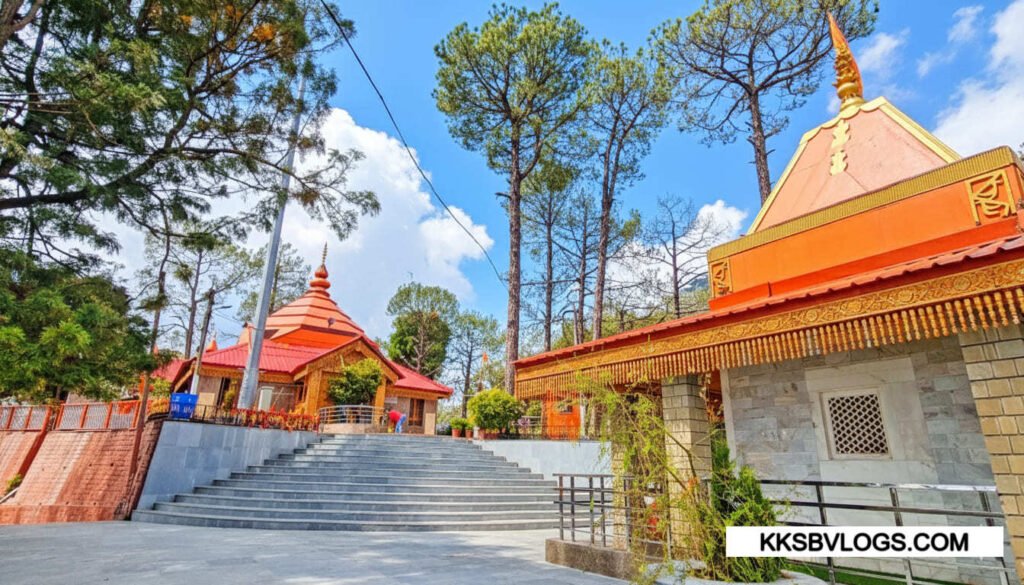
3.2 Gardens & Courtyard
From the temple courtyard, visitors can enjoy postcard-like views of Shimla Valley. Surrounded by lush lawns and deodar trees, it is perfect for both meditation and photography. Benches placed around the courtyard allow you to sit peacefully, listening to temple bells in the crisp mountain air.
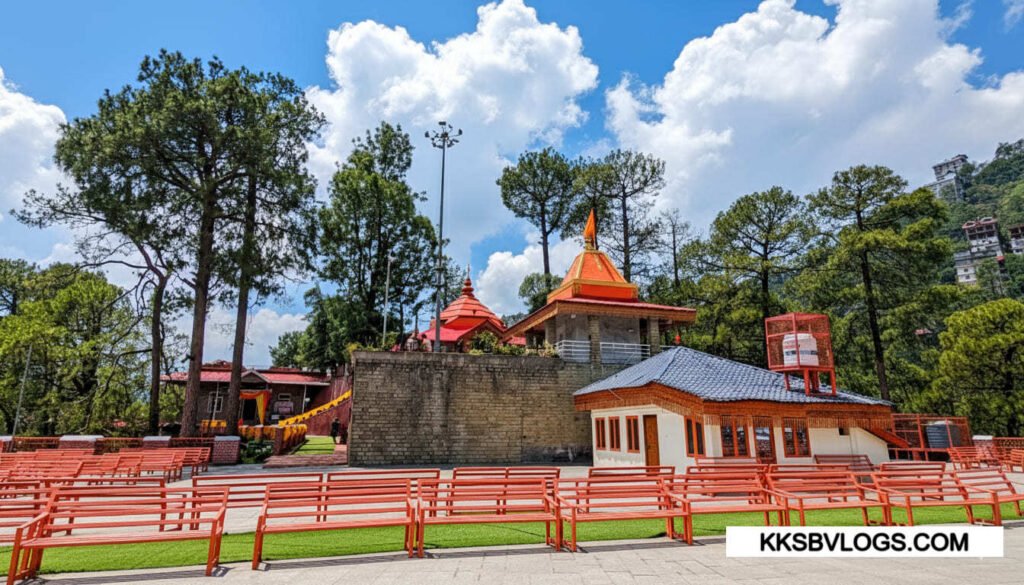
3.3 Spiritual Importance
- Considered a siddh sthal (blessed site) due to Neem Karoli Baba’s meditation.
- Worship here is believed to remove life’s troubles and give courage.
- The Sunday Bhandara is seen as both divine blessing and sacred prasad.
3.4 Why Visitors Love It
Unlike Jakhu, the temple here is less crowded, giving visitors a more personal spiritual connection. It offers not just darshan, but a combination of nature, silence, and devotion that leaves a lasting peace in the heart.
4) Things to See at Sankat Mochan Temple
The temple complex is a multi-shrine spiritual center offering much more than just Hanuman Ji’s darshan.
- Main Hanuman Shrine:
- The heart of the complex.
- Sitting before the idol and reciting the Hanuman Chalisa brings deep peace.
- The sound of bells and the fragrance of incense create a divine ambiance.
- Rama–Sita & Lakshman Temple:
- Special shrine for Ramayana devotees.
- Decorated beautifully during festivals.
- Shiva Mandir:
- Presence of Lord Shiva adds to the temple’s sanctity.
- Devotees offer milk, bel leaves, and flowers to the Shivling.
- Ganesha Mandir:
- Known as Vighnaharta (remover of obstacles).
- Devotees seek blessings before new beginnings.
- Langar Hall :
- Every Sunday Bhandara is a major attraction.
- Hundreds of devotees enjoy a simple, free community meal.
- It is more than food – it is a feeling of togetherness and blessing.
- Scenic Courtyard & Gardens :
- Panoramic views of Shimla and valleys.
- Ideal for meditation, relaxation, and photography.
- 📸 Tip for Visitors: Avoid photography inside the shrines but capture the courtyard and valley views.
5) Festivals & Celebrations
The Sankat Mochan Temple remains filled with devotion throughout the year, but certain festivals make it even more special.
5.1 Hanuman Jayanti
- The biggest festival celebrated here.
- Thousands of devotees gather for Hanuman Chalisa recitations and prayers.
- The temple is decorated with flowers and lights, creating a divine aura.
- A large-scale bhandara (community feast) is organized.
5.2 Ram Navami
- Celebrated as the birth of Lord Rama.
- Special pujas, kirtans, and bhajans are held.
- The Rama–Sita shrine is decorated beautifully, and an evening bhajan sandhya takes place.
5.3 Navratri
- During Navratri, the temple campus hosts cultural and devotional programs.
- Devotees visit for fasts, prayers, and kirtans.
- The temple’s festive atmosphere attracts both locals and tourists.
5.4 Sunday Bhandara
- Every Sunday, a community langar is held.
- Hundreds of devotees enjoy the free meal, which is considered both prasad and blessing.
- This tradition makes the temple not just a place of worship but also of community bonding.
✨ Festival Tip: During major festivals, the temple gets crowded. Visiting early in the morning ensures peaceful darshan.
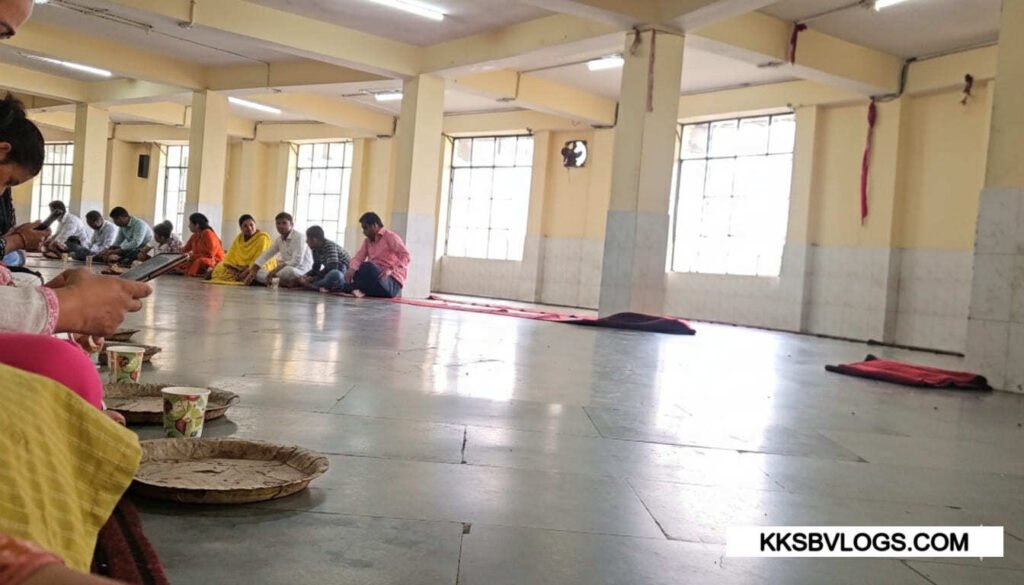
6) How to Reach Sankat Mochan Temple
📍 Location: NH-22, Shimla Bypass Road, ~7 km from Shimla city center
6.1 By Road
The temple is just 7 km from Shimla and can be reached in 20–25 minutes by car or taxi. Driving along NH-22 is both scenic and comfortable.
6.2 By Train
The nearest station is Shimla Railway Station (~5 km), part of the Kalka–Shimla toy train line. From there, taxis and local buses are easily available.
6.3 By Air
- Nearest airport: Shimla Jubarhatti (~17 km)
- Major alternative: Chandigarh Airport (~117 km), with better connectivity and about a 4-hour drive.
6.4 By Trek/Walk
Nature lovers can trek through the forested trails from Shimla outskirts. The walk through deodar trees gives a refreshing spiritual vibe.
✨ Visitor Guidance: For elderly and families with kids, taxis or private cars are the most convenient option.
7) Best Time to Visit Sankat Mochan Temple
The temple is open all year, but each season offers a different charm:
- March – June (Summer): Pleasant weather (15–25°C), best for trekking, photography, and clear valley views.
- July – September (Monsoon): Surroundings turn lush green, with mist and clouds giving a mystical aura. Roads may be slippery, so wear good shoes.
- October – February (Winter): Cold weather with chances of snow-covered valleys. The peaceful environment in winter feels truly divine.
✨ Best Overall Time: Morning hours (8 AM – 11 AM) are perfect as the atmosphere is fresh, peaceful, and less crowded.

8) Visitor Information
- Timings: 6:00 AM – 8:00 PM (summer); closes earlier in winter.
- Entry Fee: Free (no charges for darshan).
Facilities:
- Parking near the temple
- Drinking water and clean washrooms
- Prasad and flower stalls
- Langar hall for Sunday meals
Average Time Required:
1–1.5 hours (darshan, courtyard relaxation, and photography).
Dress Code :
Simple and decent clothing is preferred. In winters, carry warm jackets and for treks, sports shoes are recommended.
Safety & Guidance ⚠️:
- Be cautious on slippery monsoon roads.
- Families and elderly should prefer taxis.
- During festivals, visit early to avoid heavy crowds.
9) Our Experience at Sankat Mochan Temple
During our Shimla trip, Sankat Mochan Temple felt like a soulful break. Driving along NH-22, the sight of lush pine and deodar trees as we reached the temple gate was refreshing.
Personally, I feel very connected to this temple. I try to visit 2–3 times a month, even outside trips, because the peace and positive vibes here always pull me back.
Inside, sitting before Hanuman Ji’s idol and reciting the Hanuman Chalisa was a divine moment. The ringing bells and fragrance of incense filled the air with spirituality. After darshan of Rama–Sita and Shiva shrines, we spent time in the courtyard, admiring Shimla Valley’s panoramic view – like a postcard scene.
The highlight was the Sunday Bhandara. Sharing a simple yet tasty meal with everyone in the langar hall felt like being part of one big family.
Most importantly, the peace here is unmatched. Unlike Jakhu, Sankat Mochan is less crowded, making it the best place to experience real serenity, nature, and devotion together.
10) Nearby Attractions From Sankat Mochan Temple
1. Tara Devi Temple (~12 km)
Perched on a hilltop, the Tara Devi Temple is one of Shimla’s most popular spiritual destinations. Dedicated to Maa Tara, this temple offers devotees not just blessings but also breathtaking panoramic views of Shimla and the Shivalik mountains. The peaceful setting, especially during Navratri, turns vibrant with decorations, prayers, and festive energy.
2. Jakhu Temple (~13 km)
Located at the highest peak of Shimla (2,455 m), the Jakhu Temple is famous for its 108-feet Hanuman statue that dominates the skyline. Visitors can reach the temple by a scenic trek through the forests or by the convenient ropeway ride. From here, you get unmatched views of valleys and Himalayan ranges. Just be careful with monkeys, as they are a common sight here. 🐒
3. The Ridge & Christ Church (~9 km)
The Ridge is the cultural and social hub of Shimla, a wide open space where most fairs, parades, and celebrations take place. It’s perfect for evening walks and soaking in the mountain views. Right next to it stands the Christ Church, built in the Neo-Gothic style, making it one of the city’s iconic landmarks. Its stained glass windows and colonial design make it look especially beautiful when lit up at night.
4. Mall Road (~7 km)
The heartbeat of Shimla, Mall Road is where shopping, leisure, and local flavors come alive. Here, you’ll find handicraft shops, woolen stores, bakeries, and cozy cafés. From enjoying local snacks like momos, roasted corn, and hot gulab jamuns to buying souvenirs, Mall Road has it all. Its lively vibe and colonial-era buildings make it a must-visit for every traveler.
5. Indian Institute of Advanced Study (IIAS) (~7 km)
The IIAS, once the Viceregal Lodge, is a striking heritage building from the British era. Surrounded by lush lawns, it showcases Scottish-style architecture and remains one of Shimla’s grandest structures. Today, it functions as a renowned research institute, but for tourists, the guided tours and stunning architecture provide an enriching mix of history, heritage, and photography opportunities.
Sankat Mochan Temple Location, Photos & Video
YouTube Video:Coming soon on – KKSB Vlogs
Instagram Updates: Stay connected with us for reels and updates– @official_kksb
Sankat Mochan Temple Photos
Sankat Mochan Temple Location
❓ FAQs about Sankat Mochan Temple Shimla
Where is Sankat Mochan Temple located in Shimla?
Sankat Mochan Temple is situated on NH-22, about 7 km from Shimla city center. It is surrounded by lush deodar and pine forests, making it a peaceful spot. Visitors can reach here easily by taxi, car, or local bus within 20–25 minutes.
What is the history of Sankat Mochan Temple?
The temple was established in the 1950s when Neem Karoli Baba meditated at this spot and decided to build a shrine for Lord Hanuman. What began as a small temple has now become one of Shimla’s most visited spiritual places, with thousands of devotees visiting every week.
Why is the temple called Sankat Mochan?
In Hindu belief, Lord Hanuman is called “Sankat Mochan”, meaning the remover of troubles. Devotees believe that worshipping here helps reduce life’s obstacles, sorrows, and fears. The temple’s name reflects this faith, and visitors often come here seeking blessings for courage and peace.
What are the main attractions inside Sankat Mochan Temple?
The temple complex includes shrines of Hanuman Ji, Lord Rama–Sita, Lord Shiva, and Lord Ganesha. There is also a Langar Hall where a community meal is served every Sunday. From the courtyard, visitors can enjoy panoramic views of Shimla Valley.
When is the best time to visit Sankat Mochan Temple?
The temple is open all year, but March–June offers the most pleasant weather. Monsoons bring mist and greenery, while winters sometimes offer snow-covered valleys. Morning hours (8 AM – 11 AM) are ideal to enjoy the peaceful environment without crowds.
What facilities are available at Sankat Mochan Temple?
Visitors will find parking, clean washrooms, drinking water, and prasad stalls near the temple. On Sundays, the Langar Hall serves free community meals. Benches in the courtyard allow devotees to relax while enjoying the mountain views and calm atmosphere.
How can one reach Sankat Mochan Temple from Shimla?
The temple is about 7 km from Mall Road and can be reached by road in under 30 minutes. The nearest railway station is Shimla (5 km), while Shimla Airport (18 km) and Chandigarh Airport (120 km) are the closest air options.
What are some nearby attractions to Sankat Mochan Temple?
Nearby attractions include Tara Devi Temple, Jakhu Temple, The Ridge, Christ Church, Mall Road, and IIAS (Indian Institute of Advanced Study). These spots add a mix of heritage, culture, shopping, and spirituality, making a trip to Shimla more fulfilling.

